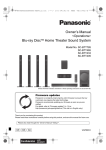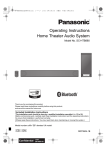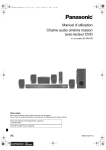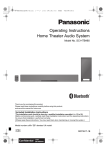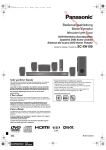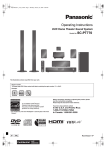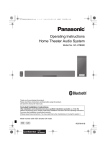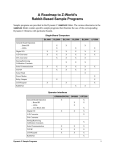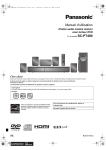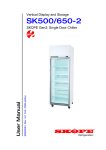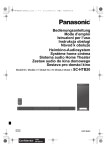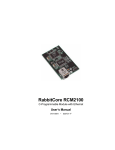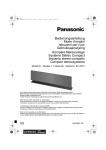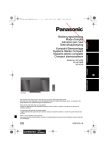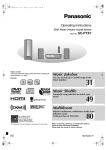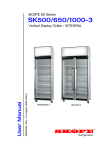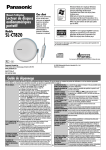Download netX 50 to netX 51/52 | Migration Guide
Transcript
Migration Guide netX 50 to netX 51/52 Hilscher Gesellschaft für Systemautomation mbH www.hilscher.com DOC120109MG05EN | Revision 5 | English | 2013-08 | Released | Public Introduction 2/56 Table of Contents 1 Introduction.............................................................................................................................................3 1.1 Migration from netX 50 to netX 51/52 ............................................................................................3 1.2 List of Revisions .............................................................................................................................5 1.3 Terms, Abbreviations and Definitions ............................................................................................5 1.3.1 netX Signal Description ..................................................................................................................... 6 1.4 Legal Notes ..................................................................................................................................10 1.4.1 1.4.2 1.4.3 1.4.4 2 Copyright ......................................................................................................................................... 10 Important Notes............................................................................................................................... 10 Exclusion of Liability ........................................................................................................................ 11 Export .............................................................................................................................................. 11 Comparison netX 50 with netX 51/52 .................................................................................................12 2.1 Overview ......................................................................................................................................12 2.1.1 Block Diagrams ............................................................................................................................... 12 2.1.2 Key Features ................................................................................................................................... 13 2.1.3 Enhancements of netX 51/52 against netX 50 ................................................................................ 14 3 Package, Pinning, Pad Cells ...............................................................................................................15 3.1 netX 52 .........................................................................................................................................15 3.1.1 netX 52 Package ............................................................................................................................. 15 3.1.2 netX 52 Pinning ............................................................................................................................... 16 3.2 3.3 Alternative Function at Host Interface..........................................................................................22 netX 51 .........................................................................................................................................24 3.3.1 Differences in Pinning and Pad Cells .............................................................................................. 24 3.4 4 MMIO Signals...............................................................................................................................32 General Changing ................................................................................................................................34 4.1 CPUs ............................................................................................................................................34 4.1.1 Core CPU ........................................................................................................................................ 34 4.1.2 Additional CPU ................................................................................................................................ 34 4.2 Memory ........................................................................................................................................35 4.2.1 Layout.............................................................................................................................................. 35 4.3 4.4 4.5 4.6 4.7 Peripherals ...................................................................................................................................36 Improved Memory Access Performance......................................................................................38 Activating 256 KByte as Dual-Port Memory and Detection of netX 51 or netX 52 Mode ............39 Host Interface Modes ...................................................................................................................40 Miscellaneous ..............................................................................................................................41 4.7.1 Operating Conditions....................................................................................................................... 41 4.7.2 Effects to existing Software ............................................................................................................. 41 4.7.3 Effects to existing Development Tools ............................................................................................ 41 5 Erratas ...................................................................................................................................................42 5.1 Fixed Erratas of netX 50 ..............................................................................................................42 5.2 New Errata for netX 51 / 52..........................................................................................................43 5.2.1 SYS LED lights doesn’t light correctly during active Boot Loader.................................................... 43 5.2.2 Simultaneous Operation of SDRAM and parallel Flash Memory at the Memory Interface .............. 44 6 Design Examples..................................................................................................................................45 6.1 Design Example netX 51..............................................................................................................45 6.2 Design Example netX 52..............................................................................................................50 7 Appendix ...............................................................................................................................................55 7.1 List of Tables................................................................................................................................55 7.2 List of Figures...............................................................................................................................55 7.3 Contacts .......................................................................................................................................56 netX 50 to netX 51/52 | Migration Guide DOC120109MG05EN | Revision 5 | English | 2013-08 | Released | Public 2012-2013 Introduction 1 1.1 3/56 Introduction Migration from netX 50 to netX 51/52 This manual describes the differences between the netX 50 and netX 51/52 with the aim to support and lead you during the migration from netX 50 to netX 51/52. Real-Time-Ethernet / Fieldbus PHY Memory* CAN xC ALUs Channel 1 MAC USB 2x I2C Data SPI / QSPI Switch MEM EXT xC ALUs Channel 2 xPIC RISC CPU 100 MHz 3x UART 672 KB SRAM 64kB ROM Memory Controller PHY ARM 966 100 MHz CPUs Peripherals 8x IO-Link netX 51 / 52 * netX 52: None external Memory Bus DPM SPM MAC PIO Host-Interface Figure 1: Functionality and Price of netX 6/50/51/52 Within the netX network controller family the netX 50 support all Real-Time-Ethernet systems. After a few years in the market it was necessary to upgrade the communication functionality to support PROFINET in the version 2.3. Together with some other enhancement we are offering the pin compatible controller netX 51. This can be placed on already existing netX 50 PCBs without modifications. It also supports IO-Link version 1.1 and includes much more RAM and an additional 32-Bit Risc Controller, CAN controller and a MAC. The same functionality is available as netX 52 without an external memory bus in a smaller package for a lower price. The netX 6 with the same housing as the netX 52 is designed as network access controller. This means it needs additional a host CPU to run the protocol stack. It includes only the 32-Bit Risc controller and less memory to realize only the Real-Time-Switch functionality. netX 50 to netX 51/52 | Migration Guide DOC120109MG05EN | Revision 5 | English | 2013-08 | Released | Public 2012-2013 Introduction 4/56 With the netX 52 you can build up a very compact (30 x 30 mm) 2-Port Real-Time-Ethernet Interfaces for a very low price. With the loadable firmware the whole interface works a black box with a configurable 8-/16-/32-Bit Dual-Port-Memory or a SPI slave interface. The following block diagram gives you an overview. The detailed schematic you will find in the annex of this Migration Guide. 3.3V Host-DPM Host-SPI RDY DPM / SPM / PIO RUN UART or Synchronization RXD / SYNC0 MMIO28 TXD / SYNC1 MMIO29 MMIO30 USB MMIO31 USB netX 52 4 MB SPI Flash Power on Reset COM1 3.3V SPI LINK ACT POR PHY0_TXN PHY0_RXP Ethernet Channel 0 XTI PHY0_RXN XTO MMIO14 MMIO15 PHY1_TXP LINK ACT PHY1_TXN PHY1_RXP Ethernet Channel 1 VDDC VDDIO VSS 3.3V GND COM0 MMIO12 MMIO13 PHY0_TXP 25 MHz 3.3V 1.5V SYS PHY1_RXN GND Figure 2: Design Example with netX 51 Component Description Manufacturer Price netX 52 Network Controller Hilscher 10,00 € W25Q32VSSIG QSPI Flash Windbond 0,70 € MAX811SEUS-T Reset Generator Maxim 0,20 € EN5312Q DC/DC Converter 3,3 V/1,5 V Enpirion 1,20 € 25 MHz Crystal div. 0,30 € 3x LED Dual Color div. 0,30 € Dual RJ45 with Magnetics / LEDs div. 2,80 € Rs / Cs / Ls div. 0,50 € Material Cost per Interface in quantities of 10.000 pcs. without PCB 16,00 € Table 1: Material Costs netX 50 to netX 51/52 | Migration Guide DOC120109MG05EN | Revision 5 | English | 2013-08 | Released | Public 2012-2013 Introduction 1.2 5/56 List of Revisions Rev Date Name Chapter Revision 0 2012-02-01 AO All Created. 1 2012-02-08 HJH All Reviewed. 1.3.1 Signal name for MII interface starts with MII (instead of ETH) in Table 4. 2 2012-04-25 HJH 3 2012-11-28 HH 4 5 2013-03-26 2013-08-26 HH HH Added some additional explanation. 2.1.1 Figure 4: MAC (to PHY) mappable into Host Interface. 3.1.2 Corrections 3.2 Section Alternative Function at Host Interface added. 5.2.2 Section Simultaneous Operation of SDRAM and parallel Flash Memory at the Memory Interface added 2.1.1, 2.1.2 Correction: 1x I2C for netX 50 4.6 Section Host Interface Modes updated. Table 22 revised. 4.5 Correction: 10 Kbyte to 10 kOhm Table 2: List of Revisions 1.3 Terms, Abbreviations and Definitions Term Description DPM Dual-Port Memory DFP Dynamic Frame Packing FTS Fast-Track Switching HIF Host InterFace INTRAM INTernal SRAM PBGA Plastic Ball Grid Array XiP EXecution in Place xMAC Flexible Media Access Controller xPEC Flexible Protocol Execution Controller xPIC Flexible Peripheral Interface Controller Table 3: Terms, Abbreviations and Definitions All variables, parameters, and data used in this manual have the LSB/MSB (“Intel”) data format. This corresponds to the convention of the Microsoft C Compiler. All IP addresses in this document have host byte order. netX 50 to netX 51/52 | Migration Guide DOC120109MG05EN | Revision 5 | English | 2013-08 | Released | Public 2012-2013 Introduction 1.3.1 6/56 netX Signal Description General PORn Power on Reset RSTINn Reset Input RSTOUTn Reset Output RDYn RDY-LED / Boot option RUNn RUN-LED / Boot option CLKOUT Clock out WDGACT Watchdog active Oscillator OSC_XTI 25 MHz Crystal Input OSC_XTO 25 MHz Crystal Output OSC_VSS Oscillator Power Supply Ground OSC_VDDC Oscillator Power Supply Core 1.5V JTAG JT_TRSTn JTAG Test Reset JT_TMS JTAG Test Mode Select JT_TCLK JTAG Test Clock JT_TDI JTAG Test Data Input JT_TDO JTAG Test Data Output SPI SPI0_CLK SPI 0 Clock SPI0_CS0n SPI 0 Chip Select 0 SPI0_CS1n SPI 0 Chip Select 1 SPI0_MISO SPI 0 Master Input Slave Output Data SPI0_MOSI SPI 0 Master Output Slave Input Data QSPI_CLK XiP / QSPI Clock QSPI_CSn XiP / QSPI Chip Select QSPI_SIO0...3 XiP / QSPI Serial IO Data 0…3 I2C I2C_SCL I2C Serial Clock Line I2C_SDA I2C Serial Data Line USB USB_DNEG USB D- Line USB_DPOS USB D+ Line USB_VDDC USB Power Supply Core 1.5 V USB_VDDIO USB Power Supply IO 3.3 V Test BSCAN_TRST Reset Boundary Scan Controller TEST Activate Test Mode (left open) TMC1 Test Mode 1 (left open) TMC2 Test Mode 2 (left open) netX 50 to netX 51/52 | Migration Guide DOC120109MG05EN | Revision 5 | English | 2013-08 | Released | Public 2012-2013 Introduction 7/56 TACT_TRST Reset Test Controller MEM_IF_OM Memory Interface Output Mode, Connect to GND for normal operating mode MMIO MMIO0...48 Multiplex Matrix IO 0...48 Fieldbus Interface XM0_TX XMAC0 Transmit Data XM0_ECLK External Clock input for XM0_TX / output from XMAC0 XM0_TX_ECLK XMAC0 Transmit Data, clocked with external clock FB0_CLK Clock output of fb0_clk XM1_TX XMAC1 Transmit Data XM1_ECLK External Clock input for XM1_TX / output from XMAC1 XM1_TX_ECLK XMAC1 Transmit Data, clocked with external clock FB1_CLK Clock output of fb1_clk Ethernet MAC MII Interface MII_RXCLK Ethernet MAC Rx Clock MII_RXD0...3 Ethernet MAC Rx Data 0...3 MII_RXDV Ethernet MAC Rx Data Valid MII_RXER Ethernet MAC Rx Error MII_TXCLK Ethernet MAC Tx Clock MII_TXD0...3 Ethernet MAC Tx Data 0...3 MII_TXEN Ethernet MAC Tx Enable MII_TXER Ethernet MAC Tx Error MII_COL Ethernet MAC Collision MII_CRS Ethernet MAC Carrier Sense Memory Interface MEMSR_CS0...2n SRAM Chip Select 0...2 MEMSR_OEn SRAM Output Enable MEMSR_WEn SRAM Write Enable MEMDR_CSn SDRAM Chip Select MEMDR_WEn SDRAM Write Enable MEMDR_RASn SDRAM RAS MEMDR_CASn SDRAM CAS MEMDR_CKE SDRAM Clock Enable MEMDR_CLK SDRAM Clock MEM_DQM0 Memory Data Qualifier Mask D0-7 MEM_DQM1 Memory Data Qualifier Mask D8-15 MEM_DQM2 Memory Data Qualifier Mask D16-23 MEM_DQM3 Memory Data Qualifier Mask D24-31 MEM_D0...31 Memory Data 0-31 MEM_A0...23 Memory Address 0-23 Host Interface DPM_A00...15 Dual-Port Memory Address 0..15 DPM_BE1n Dual-Port Memory Byte High Enable netX 50 to netX 51/52 | Migration Guide DOC120109MG05EN | Revision 5 | English | 2013-08 | Released | Public 2012-2013 Introduction 8/56 DPM_BE3n Dual-Port Memory Byte Enable 3 DPM_CSn Dual-Port Memory Chip Select DPM_D0...31 Dual-Port Memory Data 0...31 DPM_DIRQn Dual-Port Memory Data Interrupt DPM_SIRQn Dual-Port Memory Sync Interrupt DPM_RDn Dual-Port Memory Read DPM_WAITn Dual-Port Memory Wait DPM_WRn Dual-Port Memory Write SPM_MISO Serial-Port Memory (SPI) Master Input Slave Output Data SPM_MOSI Serial-Port Memory (SPI) Master Output Slave Input Data SPM_CSN Serial-Port Memory (SPI) Chip Select SPM_CLK Serial-Port Memory (SPI) Clock SPM_DIRQ Serial-Port-Memory Interrupt Source 1 SPM_SIRQ Serial-Port-Memory Interrupt Source 2 PHY0, PHY1 PHY0_RXN PHY 0 Receive Input negative PHY0_RXP PHY 0 Receive Input positive PHY0_TXN PHY 0 Transmit Output negative PHY0_TXP PHY 0 Transmit Output positive FO0_RD Fiberoptic Ethernet channel 0, Receive Data FO0_TD Fiberoptic Ethernet channel 0, Transmit Data FO0_EN Fiberoptic Ethernet channel 0, Enable FO0_SD Fiberoptic Ethernet channel 0, Signal Detect PHY0_VSSAT1 PHY 0 Analog Ground Supply PHY0_VSSAT2 PHY 0 Analog Ground Supply PHY0_VSSAR PHY 0 Analog Ground Supply PHY0_VDDCART PHY 0 Analog TX/RX Power Supply 1.5 V PHY1_RXN PHY 1 Receive Input negative PHY1_RXP PHY 1 Receive Input positive PHY1_TXN PHY 1 Transmit Output negative PHY1_TXP PHY 1 Transmit Output positive FO1_RD Fiberoptic Ethernet channel 1, Receive Data FO1_TD Fiberoptic Ethernet channel 1, Transmit Data FO1_EN Fiberoptic Ethernet channel 1, Enable FO1_SD Fiberoptic Ethernet channel 1, Signal Detect PHY1_VSSAT1 PHY 1 Analog Ground Supply PHY1_VSSAT2 PHY 1 Analog Ground Supply PHY1_VSSAR PHY 1 Analog Ground Supply PHY1_VDDCART PHY 1 Analog TX/RX Power Supply 1.5 V PHY_EXTRES Reference Resistor 12.4 k / 1% PHY_ATP Leave open! PHY_VSSACP PHY Analog Central Ground Supply PHY_VDDCAP PHY Analog Central Power Supply 1.5 V netX 50 to netX 51/52 | Migration Guide DOC120109MG05EN | Revision 5 | English | 2013-08 | Released | Public 2012-2013 Introduction 9/56 PHY_VDDIOAC PHY Analog Central Power Supply 3.3 V PHY_VSSAT PHY Analog Test Ground Supply PHY_VDDIOAT PHY Analog Test Power Supply 3.3 V Power VSS Ground Supply (except PHY and Oscillator) VDDC Power Supply, Core 1.5 V (except PHY and Oscillator) VDDIO Power Supply, IO Buffer 3.3 V (except PHY and USB) ETM ETM_TCLK ETM Trace clock ETM_TSYNC ETM Trace synchronization ETM_DRQ ETM Debug request ETM_DACK ETM Debug acknowledge ETM_PSTAT0 ETM Pipe status 0 ETM_PSTAT1 ETM Pipe status 1 ETM_PSTAT2 ETM Pipe status 2 ETM_TPKT00 ETM Trace packet 0 ETM_TPKT01 ETM Trace packet 1 ETM_TPKT02 ETM Trace packet 2 ETM_TPKT03 ETM Trace packet 3 ETM_TPKT04 ETM Trace packet 4 ETM_TPKT05 ETM Trace packet 5 ETM_TPKT06 ETM Trace packet 6 ETM_TPKT07 ETM Trace packet 7 ETM_TPKT08 ETM Trace packet 8 ETM_TPKT09 ETM Trace packet 9 ETM_TPKT10 ETM Trace packet 10 ETM_TPKT11 ETM Trace packet 11 ETM_TPKT12 ETM Trace packet 12 ETM_TPKT13 ETM Trace packet 13 ETM_TPKT14 ETM Trace packet 14 ETM_TPKT15 ETM Trace packet 15 Table 4: Signal Description netX 50 to netX 51/52 | Migration Guide DOC120109MG05EN | Revision 5 | English | 2013-08 | Released | Public 2012-2013 Introduction 1.4 1.4.1 10/56 Legal Notes Copyright 2012-2013, Hilscher Gesellschaft für Systemautomation mbH All rights reserved. The images, photographs and texts in the accompanying material (user manual, accompanying texts, documentation, etc.) are protected by German and international copyright law as well as international trade and protection provisions. You are not authorized to duplicate these in whole or in part using technical or mechanical methods (printing, photocopying or other methods), to manipulate or transfer using electronic systems without prior written consent. You are not permitted to make changes to copyright notices, markings, trademarks or ownership declarations. The included diagrams do not take the patent situation into account. The company names and product descriptions included in this document may be trademarks or brands of the respective owners and may be trademarked or patented. Any form of further use requires the explicit consent of the respective rights owner. 1.4.2 Important Notes The user manual, accompanying texts and the documentation were created for the use of the products by qualified experts, however, errors cannot be ruled out. For this reason, no guarantee can be made and neither juristic responsibility for erroneous information nor any liability can be assumed. Descriptions, accompanying texts and documentation included in the user manual do not present a guarantee nor any information about proper use as stipulated in the contract or a warranted feature. It cannot be ruled out that the user manual, the accompanying texts and the documentation do not correspond exactly to the described features, standards or other data of the delivered product. No warranty or guarantee regarding the correctness or accuracy of the information is assumed. We reserve the right to change our products and their specification as well as related user manuals, accompanying texts and documentation at all times and without advance notice, without obligation to report the change. Changes will be included in future manuals and do not constitute any obligations. There is no entitlement to revisions of delivered documents. The manual delivered with the product applies. Hilscher Gesellschaft für Systemautomation mbH is not liable under any circumstances for direct, indirect, incidental or follow-on damage or loss of earnings resulting from the use of the information contained in this publication. netX 50 to netX 51/52 | Migration Guide DOC120109MG05EN | Revision 5 | English | 2013-08 | Released | Public 2012-2013 Introduction 1.4.3 11/56 Exclusion of Liability The software was produced and tested with utmost care by Hilscher Gesellschaft für Systemautomation mbH and is made available as is. No warranty can be assumed for the performance and flawlessness of the software for all usage conditions and cases and for the results produced when utilized by the user. Liability for any damages that may result from the use of the hardware or software or related documents, is limited to cases of intent or grossly negligent violation of significant contractual obligations. Indemnity claims for the violation of significant contractual obligations are limited to damages that are foreseeable and typical for this type of contract. It is strictly prohibited to use the software in the following areas: for military purposes or in weapon systems; for the design, construction, maintenance or operation of nuclear facilities; in air traffic control systems, air traffic or air traffic communication systems; in life support systems; in systems in which failures in the software could lead to personal injury or injuries leading to death. We inform you that the software was not developed for use in dangerous environments requiring fail-proof control mechanisms. Use of the software in such an environment occurs at your own risk. No liability is assumed for damages or losses due to unauthorized use. 1.4.4 Export The delivered product (including the technical data) is subject to export or import laws as well as the associated regulations of different counters, in particular those of Germany and the USA. The software may not be exported to countries where this is prohibited by the United States Export Administration Act and its additional provisions. You are obligated to comply with the regulations at your personal responsibility. We wish to inform you that you may require permission from state authorities to export, re-export or import the product. netX 50 to netX 51/52 | Migration Guide DOC120109MG05EN | Revision 5 | English | 2013-08 | Released | Public 2012-2013 Comparison netX 50 with netX 51/52 2 12/56 Comparison netX 50 with netX 51/52 2.1 2.1.1 Overview Block Diagrams Block Diagram netX 50 Figure 3: Block Diagram of netX 50 Block Diagram netX 51/52 Figure 4: Block Diagram of netX 51/52 netX 50 to netX 51/52 | Migration Guide DOC120109MG05EN | Revision 5 | English | 2013-08 | Released | Public 2012-2013 Comparison netX 50 with netX 51/52 2.1.2 13/56 Key Features The netX 51 and netX 52 is an enhancement of the existing netX 50 to fulfil the increasing demands of performance and functionality of industrial networks. These controllers are supporting the PROFINET Specification 2.3 with the new option of Dynamic Frame Packaging and the IO-Link Version 1.1 with long telegrams. We followed the successful strategy of the netX 10 controllers and implemented a second RISC CPU. This can be programmed by the user to work parallel with the ARM CPU handling very fast IO signals without interfering the communication tasks. Further more we increased the application interface with a dedicated CAN Controller and an Ethernet MAC. Very often these communication lines were the reason to use the more expensive three channel controller netX 100. To increase the over all performance of the netX 51 / 52 and to allow real single chip solutions the internal memory is dramatically enlarged from 96 KByte to 672 KByte. netX 50 51 CPU ARM 966-200 MHz 52 ARM 966-100 MHz Secondary CPU SRAM / ROM / ITCM / DTCM [kByte] Separate External Memory Bus xPIC-100 MHz 96 / 64 / 8 / 8 X X DPM parallel [Data Width] DPM serial Host Interface PIOs Host Interface usable as ExtMemBus / SDRAM / MAC 672 / 64 / - / 8 / 16 / 32 - X 54 58 -/-/- X/-/X Communication Channels 2 Internal PHYs 2 CAN Controller / Ethernet MAC IO-Link: Channels/Version USB Host / Device UARTs / I2C / SPI / QSPI X/X/X -/- X/X 8 / V1.0 8 / V1.0, V1.1 X/X -/X 3/1/2/- 3/2/1/1 IEEE 1588 System Time IOs (without Host Interface PIOs) - X 32 40 24 Pins / Package 324 / PBGA 244 / PBGA Grid / size [mm] 1.0 mm / 19x19 0.8 mm / 15x15 Fieldbus / RTE (w/o PN IRT with DFP and FTS) X/X Support PROFINET IRT with DFP - X Support Fast Track Switching (FTS) - X Table 5: Key Features netX 50 to netX 51/52 | Migration Guide DOC120109MG05EN | Revision 5 | English | 2013-08 | Released | Public 2012-2013 Comparison netX 50 with netX 51/52 2.1.3 14/56 Enhancements of netX 51/52 against netX 50 Significant more internal memory available to accelerate tasks High performance access to INTRAM blocks via TCM channels of ARM CPU Reduced Power Consumption with higher Performance based on lower System Clock with ARM CPU high speed Memory Access via two TCM channels Improved ARM performance on SDRAM Performance of communication channel doubled to support high performance RTE-systems as PROFINET IRT with Dynamic Frame Packing or Fast-Track-Switching xPIC as additional 100 MHz RISC CPU for time-critical tasks Separate CAN Controller in addition to two communication channels Separate Ethernet MAC in addition to two communication channels (Datalink layer done by xPIC) New generation of Renesas’ internal PHYs for shortening cut-through delays Dual-Port Memory: minimized access times, can run without Wait / Busy-line Serial access to internal DPM via SPI/QSPI Slave interface without interfering of ARM CPU Support IO-Link V1.1 specification Dedicated Quad SPI Controller instead using internal communication controller for fast loading of program code Support of XiP (Execution in Place). Execution of program code directly out of serial flash netX 50 to netX 51/52 | Migration Guide DOC120109MG05EN | Revision 5 | English | 2013-08 | Released | Public 2012-2013 Package, Pinning, Pad Cells 3 15/56 Package, Pinning, Pad Cells The netX 51 comes in a 324 pin PBGA package and has the same pinning and size as the netX 50 has. It is designed to replace the netX 50 without changing the PCB (drop-in-replacement). The netX 52 comes in a smaller 244 pin PBGA package with 0.8mm grid. 3.1 3.1.1 netX 52 netX 52 Package Figure 5: Mechanical Dimensions of the netX 52 Symbol Min Type Max A1 0.29 mm 0.35 mm 0.41 mm b 0.40 mm 0.50 mm 0.55 mm E 14.90 mm 15.00 mm 15.10 mm 14.90 mm 15.00 mm A2 1.11 mm e D 0.80 mm 15.10 mm Table 6: Mechanical Dimensions of the netX 52 netX 50 to netX 51/52 | Migration Guide DOC120109MG05EN | Revision 5 | English | 2013-08 | Released | Public 2012-2013 Package, Pinning, Pad Cells 3.1.2 Pin 16/56 netX 52 Pinning Pad In Signal Group Description Out A03 IOU9 IO DPM_A0/BE0n DPM Dual-Port Memory Address 0 B06 IOU9 IO DPM_A1/BE2n DPM Dual-Port Memory Address 1 B12 IOU9 IO DPM_A10 DPM Dual-Port Memory Address 10 A14 IOU9 IO DPM_A11 DPM Dual-Port Memory Address 11 B13 IOU9 IO DPM_A12 DPM Dual-Port Memory Address 12 A13 IOU9 IO DPM_A13 DPM Dual-Port Memory Address 13 A12 IOU9 IO DPM_A14 DPM Dual-Port Memory Address 14 B11 IOU9 IO DPM_A15 DPM Dual-Port Memory Address 15 A17 IOU9 IO DPM_A16 DPM Dual-Port Memory Address 16 A18 IOU9 IO DPM_A17 DPM Dual-Port Memory Address 17 C06 IOU9 IO DPM_A2 DPM Dual-Port Memory Address 2 C07 IOU9 IO DPM_A3 DPM Dual-Port Memory Address 3 B08 IOU9 IO DPM_A4 DPM Dual-Port Memory Address 4 A07 IOU9 IO DPM_A5 DPM Dual-Port Memory Address 5 B09 IOU9 IO DPM_A6 DPM Dual-Port Memory Address 6 C09 IOU9 IO DPM_A7 DPM Dual-Port Memory Address 7 C13 IOU9 IO DPM_A8 DPM Dual-Port Memory Address 8 A10 IOU9 IO DPM_A9 DPM Dual-Port Memory Address 9 A16 IOU9 IO DPM_BHEn/BE1n DPM Dual-Port Memory Byte Enable 1 A15 IOU9 IO DPM_CSn DPM Dual-Port Memory Chip Select A01 IOU9 IO DPM_D0 DPM Dual-Port Memory Data 0 C02 IOU9 IO DPM_D1 DPM Dual-Port Memory Data 1 D02 IOU9 IO DPM_D2 DPM Dual-Port Memory Data 2 B03 IOU9 IO DPM_D3 DPM Dual-Port Memory Data 3 B04 IOU9 IO DPM_D4 DPM Dual-Port Memory Data 4 B02 IOU9 IO DPM_D5 DPM Dual-Port Memory Data 5 A05 IOU9 IO DPM_D6 DPM Dual-Port Memory Data 6 B05 IOU9 IO DPM_D7 DPM Dual-Port Memory Data 7 G18 IOU9 IO DPM_D8 DPM Dual-Port Memory Data 8 G16 IOU9 IO DPM_D9 DPM Dual-Port Memory Data 9 F17 IOU9 IO DPM_D10 DPM Dual-Port Memory Data 10 D18 IOU9 IO DPM_D11 DPM Dual-Port Memory Data 11 C18 IOU9 IO DPM_D12 DPM Dual-Port Memory Data 12 B18 IOU9 IO DPM_D13 DPM Dual-Port Memory Data 13 C17 IOU9 IO DPM_D14 DPM Dual-Port Memory Data 14 B17 IOU9 IO DPM_D15 DPM Dual-Port Memory Data 15 G17 IOU9 IO DPM_D16 DPM Dual-Port Memory Data 16 F18 IOU9 IO DPM_D17 DPM Dual-Port Memory Data 17 E18 IOU9 IO DPM_D18 DPM Dual-Port Memory Data 18 E17 IOU9 IO DPM_D19 DPM Dual-Port Memory Data 19 C12 IOU9 IO DPM_D20 DPM Dual-Port Memory Data 20 C11 IOU9 IO DPM_D21 DPM Dual-Port Memory Data 21 A11 IOU9 IO DPM_D22 DPM Dual-Port Memory Data 22 C10 IOU9 IO DPM_D23 DPM Dual-Port Memory Data 23 netX 50 to netX 51/52 | Migration Guide DOC120109MG05EN | Revision 5 | English | 2013-08 | Released | Public 2012-2013 Package, Pinning, Pad Cells Pin Pad 17/56 In Signal Group Description Out A09 IOU9 IO DPM_D24 DPM Dual-Port Memory Data 24 A08 IOU9 IO DPM_D25 DPM Dual-Port Memory Data 25 A06 IOU9 IO DPM_D26 DPM Dual-Port Memory Data 26 B07 IOU9 IO DPM_D27 DPM Dual-Port Memory Data 27 A02 IOU9 IO DPM_D28 DPM Dual-Port Memory Data 28 A04 IOU9 IO DPM_D29 DPM Dual-Port Memory Data 29 D03 IOU9 IO DPM_D30 DPM Dual-Port Memory Data 30 H17 IOU9 IO DPM_D31 DPM Dual-Port Memory Data 31 D16 IOU9 IO DPM_DIRQn DPM Dual-Port Memory Data Interrupt B15 IOU9 IO DPM_RDn DPM Dual-Port Memory Read C15 IOU9 IO DPM_WAITn DPM Dual-Port Memory Wait C08 IOD9 IO DPM_SIRQn DPM Dual-Port Memory Sync Interrupt B16 IOU9 IO DPM_WRHn/BE3n DPM Dual-Port Memory Byte Enable 3 B14 IOU9 IO DPM_WRn/WRLn DPM Dual-Port Memory Write E03 IDS I BSCAN_TRST GENERAL Reset Boundary Scan Controller V07 PLL power supply I OSC_VDDC GENERAL Oscillator Power Supply Core 1.5V U07 PLL power supply I OSC_VSS GENERAL Oscillator Power Supply Ground U08 Ocsillator pad I OSC_XTI GENERAL 25 MHz Crystal Input V08 Ocsillator pad O OSC_XTO GENERAL 25 MHz Crystal Output C01 IUS I PORn GENERAL Power on Reset F01 IOD6 IO RDYn GENERAL RDY-LED / Boot start option D01 OZ6 O RSTOUTn GENERAL Reset Output F02 IOD6 IO RUNn GENERAL RUN-LED / Boot start option G02 IDS I TACT_TRST GENERAL Reset Test Controller B10 ID I TEST GENERAL Activate Test Mode (left open) F03 Internal Test pin, tmc1 I TMC1 GENERAL Test Mode 1 (left open) G03 Internal Test pin, tmc2 I TMC2 GENERAL Test Mode 2 (left open) H18 IOZUS9 (5K pull up) IO I2C_SCL I2C I2C Serial Clock Line H16 IOZUS9 (5K pull up) IO I2C_SDA I2C I2C Serial Data Line H01 IUS I JT_TCLK JTAG JTAG Test Clock J03 IUS I JT_TDI JTAG JTAG Test Data Input M03 OZ6 O JT_TDO JTAG JTAG Test Data Output K03 IUS I JT_TMS JTAG JTAG Test Mode Select H03 IDS I JT_TRSTn JTAG JTAG Test Reset T13 - - n. c. - Reserved T10 1,5V Core Power VDDC POWER Power Supply Core 1.5V T12 1,5V Core Power VDDC POWER Power Supply Core 1.5V T11 3,3V IO Power VDDIO POWER Power Supply IO 3.3V U14 3,3V IO Power VDDIO POWER Power Supply IO 3.3V U10 - - n. c. - Reserved V10 - - n. c. - Reserved U12 - - n. c. - Reserved V12 - - n. c. - Reserved U11 - - n. c. - Reserved V11 - - n. c. - Reserved U13 - I- n. c. - Reserved netX 50 to netX 51/52 | Migration Guide DOC120109MG05EN | Revision 5 | English | 2013-08 | Released | Public 2012-2013 Package, Pinning, Pad Cells Pin Pad 18/56 In Signal Group Description Out V13 - I- n. c. - Reserved H02 IODS6 IO MMIO0 MMIO Multiplex Matrix IO 0 K02 IODS6 IO MMIO1 MMIO Multiplex Matrix IO 1 J02 IODS6 IO MMIO2 MMIO Multiplex Matrix IO 2 L03 IODS6 IO MMIO3 MMIO Multiplex Matrix IO 3 L01 IODS6 IO MMIO4 MMIO Multiplex Matrix IO 4 M01 IODS6 IO MMIO5 MMIO Multiplex Matrix IO 5 M02 IODS6 IO MMIO6 MMIO Multiplex Matrix IO 6 N01 IODS6 IO MMIO7 MMIO Multiplex Matrix IO 7 N02 IODS6 IO MMIO8 MMIO Multiplex Matrix IO 8 P02 IODS6 IO MMIO9 MMIO Multiplex Matrix IO 9 R01 IODS6 IO MMIO10 MMIO Multiplex Matrix IO 10 T01 IODS6 IO MMIO11 MMIO Multiplex Matrix IO 11 R02 IODS6 IO MMIO12 MMIO Multiplex Matrix IO 12 U02 IODS6 IO MMIO13 MMIO Multiplex Matrix IO 13 T02 IODS6 IO MMIO14 MMIO Multiplex Matrix IO 14 R03 IODS6 IO MMIO15 MMIO Multiplex Matrix IO 15 T04 IODS6 IO MMIO16 MMIO Multiplex Matrix IO 16 V01 IODS6 IO MMIO17 MMIO Multiplex Matrix IO 17 U04 IODS6 IO MMIO18 MMIO Multiplex Matrix IO 18 U03 IODS6 IO MMIO19 MMIO Multiplex Matrix IO 19 T05 IODS6 IO MMIO20 MMIO Multiplex Matrix IO 20 V03 IODS6 IO MMIO21 MMIO Multiplex Matrix IO 21 T06 IODS6 IO MMIO22 MMIO Multiplex Matrix IO 22 U05 IODS6 IO N16 ANA MMIO23 MMIO Multiplex Matrix IO 23 PHY_ATP PHY PHY Analog Test Point (leave open) N17 ANA PHY_EXTRES PHY PHY Reference Resistor 12.4K 1% M16 APWR PHY_VDDCAP PHY PHY Power Supply Core 1.5V N18 APWR PHY_VDDIOAC PHY PHY Power Supply IO 3.3V T17 APWR PHY_VDDIOAT PHY PHY Power Supply IO 3.3V L16 AGND PHY_VSSACP PHY PHY Power Supply Ground M12 AGND PHY_VSSAT PHY PHY Power Supply Ground R17 PHY Receiver PHY0_RXN PHY PHY 0 Receive Input negative I R18 PHY Receiver I PHY0_RXP PHY PHY 0 Receive Input positive P17 PHY Transceiver O PHY0_TXN PHY PHY 0 Transmit Output negative P18 PHY Transceiver O PHY0_TXP PHY PHY 0 Transmit Output positive U18 APWR PHY0_VDDCART PHY PHY 0 Power Supply Core 1.5V P16 AGND PHY0_VSSAR PHY PHY 0 Power Supply Ground L10 AGND PHY0_VSSAT1 PHY PHY 0 Power Supply Ground L11 AGND PHY0_VSSAT2 PHY PHY 0 Power Supply Ground K17 PHY Receiver I PHY1_RXN PHY PHY 0 Receive Input positive K18 PHY Receiver I PHY1_RXP PHY PHY 0 Receive Input negative L17 PHY Transceiver O PHY1_TXN PHY PHY 1 Transmit Output positive L18 PHY Transceiver O K16 APWR PHY1_TXP PHY PHY 1 Transmit Output negative PHY1_VDDCART PHY PHY 1 Power Supply Core 1.5V netX 50 to netX 51/52 | Migration Guide DOC120109MG05EN | Revision 5 | English | 2013-08 | Released | Public 2012-2013 Package, Pinning, Pad Cells Pin Pad 19/56 In Signal Group Description Out L12 AGND PHY1_VSSAR PHY PHY 1 Power Supply Ground M18 AGND PHY1_VSSAT1 PHY PHY 1 Power Supply Ground M17 AGND PHY1_VSSAT2 PHY PHY 1 Power Supply Ground F06 1,5V Core Power VDDC POWER Power Supply Core 1.5V F07 1,5V Core Power VDDC POWER Power Supply Core 1.5V F08 1,5V Core Power VDDC POWER Power Supply Core 1.5V F09 1,5V Core Power VDDC POWER Power Supply Core 1.5V F10 1,5V Core Power VDDC POWER Power Supply Core 1.5V F11 1,5V Core Power VDDC POWER Power Supply Core 1.5V F12 1,5V Core Power VDDC POWER Power Supply Core 1.5V F13 1,5V Core Power VDDC POWER Power Supply Core 1.5V G06 1,5V Core Power VDDC POWER Power Supply Core 1.5V G13 1,5V Core Power VDDC POWER Power Supply Core 1.5V H06 1,5V Core Power VDDC POWER Power Supply Core 1.5V H13 1,5V Core Power VDDC POWER Power Supply Core 1.5V J06 1,5V Core Power VDDC POWER Power Supply Core 1.5V J13 1,5V Core Power VDDC POWER Power Supply Core 1.5V J17 1,5V Core Power VDDC POWER Power Supply Core 1.5V J18 1,5V Core Power VDDC POWER Power Supply Core 1.5V K06 1,5V Core Power VDDC POWER Power Supply Core 1.5V K13 1,5V Core Power VDDC POWER Power Supply Core 1.5V L06 1,5V Core Power VDDC POWER Power Supply Core 1.5V L13 1,5V Core Power VDDC POWER Power Supply Core 1.5V M06 1,5V Core Power VDDC POWER Power Supply Core 1.5V M13 1,5V Core Power VDDC POWER Power Supply Core 1.5V N06 1,5V Core Power VDDC POWER Power Supply Core 1.5V N07 1,5V Core Power VDDC POWER Power Supply Core 1.5V N08 1,5V Core Power VDDC POWER Power Supply Core 1.5V N09 1,5V Core Power VDDC POWER Power Supply Core 1.5V N10 1,5V Core Power VDDC POWER Power Supply Core 1.5V N11 1,5V Core Power VDDC POWER Power Supply Core 1.5V N12 1,5V Core Power VDDC POWER Power Supply Core 1.5V N13 1,5V Core Power VDDC POWER Power Supply Core 1.5V R16 1,5V Core Power VDDC POWER Power Supply Core 1.5V T16 1,5V Core Power VDDC POWER Power Supply Core 1.5V C03 3,3V IO Power VDDIO POWER Power Supply IO 3.3V C04 3,3V IO Power VDDIO POWER Power Supply IO 3.3V C14 3,3V IO Power VDDIO POWER Power Supply IO 3.3V D17 3,3V IO Power VDDIO POWER Power Supply IO 3.3V E01 3,3V IO Power VDDIO POWER Power Supply IO 3.3V E02 3,3V IO Power VDDIO POWER Power Supply IO 3.3V E16 3,3V IO Power VDDIO POWER Power Supply IO 3.3V K01 3,3V IO Power VDDIO POWER Power Supply IO 3.3V L02 3,3V IO Power VDDIO POWER Power Supply IO 3.3V P03 3,3V IO Power VDDIO POWER Power Supply IO 3.3V T03 3,3V IO Power VDDIO POWER Power Supply IO 3.3V netX 50 to netX 51/52 | Migration Guide DOC120109MG05EN | Revision 5 | English | 2013-08 | Released | Public 2012-2013 Package, Pinning, Pad Cells Pin Pad 20/56 In Signal Group Description Out T09 3,3V IO Power VDDIO POWER Power Supply IO 3.3V U17 3,3V IO Power VDDIO POWER Power Supply IO 3.3V V04 3,3V IO Power VDDIO POWER Power Supply IO 3.3V B01 Ground VSS POWER Power Supply Ground C05 Ground VSS POWER Power Supply Ground C16 Ground VSS POWER Power Supply Ground F16 Ground VSS POWER Power Supply Ground G01 Ground VSS POWER Power Supply Ground G07 Ground VSS POWER Power Supply Ground G08 Ground VSS POWER Power Supply Ground G09 Ground VSS POWER Power Supply Ground G10 Ground VSS POWER Power Supply Ground G11 Ground VSS POWER Power Supply Ground G12 Ground VSS POWER Power Supply Ground H07 Ground VSS POWER Power Supply Ground H08 Ground VSS POWER Power Supply Ground H09 Ground VSS POWER Power Supply Ground H10 Ground VSS POWER Power Supply Ground H11 Ground VSS POWER Power Supply Ground H12 Ground VSS POWER Power Supply Ground J01 Ground VSS POWER Power Supply Ground J07 Ground VSS POWER Power Supply Ground J08 Ground VSS POWER Power Supply Ground J09 Ground VSS POWER Power Supply Ground J10 Ground VSS POWER Power Supply Ground J11 Ground VSS POWER Power Supply Ground J12 Ground VSS POWER Power Supply Ground J16 Ground VSS POWER Power Supply Ground K07 Ground VSS POWER Power Supply Ground K08 Ground VSS POWER Power Supply Ground K09 Ground VSS POWER Power Supply Ground K10 Ground VSS POWER Power Supply Ground K11 Ground VSS POWER Power Supply Ground K12 Ground VSS POWER Power Supply Ground L07 Ground VSS POWER Power Supply Ground L08 Ground VSS POWER Power Supply Ground L09 Ground VSS POWER Power Supply Ground M07 Ground VSS POWER Power Supply Ground M08 Ground VSS POWER Power Supply Ground M09 Ground VSS POWER Power Supply Ground M10 Ground VSS POWER Power Supply Ground M11 Ground VSS POWER Power Supply Ground N03 Ground VSS POWER Power Supply Ground P01 Ground VSS POWER Power Supply Ground T18 Ground VSS POWER Power Supply Ground U01 Ground VSS POWER Power Supply Ground netX 50 to netX 51/52 | Migration Guide DOC120109MG05EN | Revision 5 | English | 2013-08 | Released | Public 2012-2013 Package, Pinning, Pad Cells Pin Pad 21/56 In Signal Group Description Out U09 Ground VSS POWER Power Supply Ground V02 Ground VSS POWER Power Supply Ground V05 Ground VSS POWER Power Supply Ground V09 Ground VSS POWER Power Supply Ground V14 Ground VSS POWER Power Supply Ground V17 Ground VSS POWER Power Supply Ground V18 Ground VSS POWER Power Supply Ground V16 IOD6 IO SPI0_CLK / QSPI_CLK SPI SPI Clock / QSPI Clock U15 IOU6 IO SPI0_CS0n / QSPI_CSn SPI SPI Chip Select 0 / QSPI Chip Select T15 IOD6 IO SPI0_MISO / QSPI_SIO1 SPI SPI Master Input Slave Output Data / QSPI Serial IO Data 1 U16 IOD6 IO SPI0_MOSI / QSPI_SIO0 SPI SPI Master Output Slave Input Data / QSPI Serial IO Data 0 T14 IOD6 O QSPI_SIO2 SPI QSPI Serial IO Data 2 V15 IOD6 O QSPI_SIO3 SPI QSPI Serial IO Data 3 U06 USB IO USB_DNEG USB USB D- Line V06 USB IO USB_DPOS USB USB D+ Line T08 PWR USB_VDDC USB USB Power Supply Core 1.5 V T07 PWR USB_VDDIO USB USB Power Supply IO 3.3 V Table 7: netX 52 Pinning netX 50 to netX 51/52 | Migration Guide DOC120109MG05EN | Revision 5 | English | 2013-08 | Released | Public 2012-2013 Package, Pinning, Pad Cells 3.2 22/56 Alternative Function at Host Interface Alternatively, the Host Interface can be configured as a 16 Bit SDRAM Controller working in parallel with a MII Interface for a third Ethernet channel. Pin Pad In Signal Group Description Out A01 IOU9 IO SD_D0 SD SDRAM Data 0 C02 IOU9 IO SD_D1 SD SDRAM Data 1 D02 IOU9 IO SD_D2 SD SDRAM Data 2 B03 IOU9 IO SD_D3 SD SDRAM Data 3 B04 IOU9 IO SD_D4 SD SDRAM Data 4 B02 IOU9 IO SD_D5 SD SDRAM Data 5 A05 IOU9 IO SD_D6 SD SDRAM Data 6 B05 IOU9 IO SD_D7 SD SDRAM Data 7 G17 IOU9 IO SD_D8 SD SDRAM Data 8 F18 IOU9 IO SD_D9 SD SDRAM Data 9 E18 IOU9 IO SD_D10 SD SDRAM Data 10 E17 IOU9 IO SD_D11 SD SDRAM Data 11 A06 IOU9 IO SD_D12 SD SDRAM Data 12 B07 IOU9 IO SD_D13 SD SDRAM Data 13 D03 IOU9 IO SD_D14 SD SDRAM Data 14 H17 IOU9 IO SD_D15 SD SDRAM Data 15 A03 IOU9 IO SD_A0 SD SDRAM Address 0 B06 IOU9 IO SD_A1 SD SDRAM Address 1 C06 IOU9 IO SD_A2 SD SDRAM Address 2 C07 IOU9 IO SD_A3 SD SDRAM Address 3 B08 IOU9 IO SD_A4 SD SDRAM Address 4 A07 IOU9 IO SD_A5 SD SDRAM Address 5 B09 IOU9 IO SD_A6 SD SDRAM Address 6 C09 IOU9 IO SD_A7 SD SDRAM Address 7 C13 IOU9 IO SD_A8 SD SDRAM Address 8 A10 IOU9 IO SD_A9 SD SDRAM Address 9 B12 IOU9 IO SD_A10 SD SDRAM Address 10 A14 IOU9 IO SD_A11 SD SDRAM Address 11 B13 IOU9 IO SD_A12 SD SDRAM Address 12 A12 IOU9 IO SD_BA0 SD SDRAM Bank Address 0 B11 IOU9 IO SD_BA1 SD SDRAM Bank Address 1 A13 IOU9 IO SD_DQM0n SD SDRAM Data Qualifier 0 A16 IOU9 IO SD_DQM1n SD SDRAM Data Qualifier 1 A15 IOU9 IO SD_CSn SD SDRAM Chip Select A17 IOU9 IO SD_RASn SD SDRAM Row Address Select A18 IOU9 IO SD_CASn SD SDRAM Colum Address Select B14 IOU9 IO SD_WEn SD SDRAM Write C08 IOD9 IO SD_CLK SD SDRAM Clock C15 IOU9 IO SD_CKE SD SDRAM Clock Enable D16 IOU9 IO MII_RXD0 MII MII Data Interrupt B18 IOU9 IO MII_RXD1 MII MII Data 13 netX 50 to netX 51/52 | Migration Guide DOC120109MG05EN | Revision 5 | English | 2013-08 | Released | Public 2012-2013 Package, Pinning, Pad Cells Pin Pad 23/56 In Signal Group Description Out C17 IOU9 IO MII_RXD2 MII MII Data 14 B17 IOU9 IO MII_RXD3 MII MII Data 15 B16 IOU9 IO MII_RXDV MII MII Byte Enable 3 A02 IOU9 IO MII_RXCLK MII MII Receive Clock A04 IOU9 IO MII_RXER MII MII Receive Error C11 IOU9 IO MII_TXD0 MII MII Transmit Data 0 A11 IOU9 IO MII_TXD1 MII MII Transmit Data 1 C10 IOU9 IO MII_TXD2 MII MII Transmit Data 2 A09 IOU9 IO MII_TXD3 MII MII Transmit Data 3 A08 IOU9 IO MII_TXEN MII MII Transmit Enable F17 IOU9 IO MII_TXER MII MII Transmit Error C12 IOU9 IO MII_TXCLK MII MII Transmit Clock G18 IOU9 IO MII_COL MII MII Transmit G16 IOU9 IO MII_CRS MII MII D18 IOU9 IO MII_MDIO MII MII Data 11 C18 IOU9 IO MII_MDC MII MII Data 12 B15 IOU9 IO PIO52 PIO Peripheral IO Table 8: Alternative Function at Host Interface netX 50 to netX 51/52 | Migration Guide DOC120109MG05EN | Revision 5 | English | 2013-08 | Released | Public 2012-2013 Package, Pinning, Pad Cells 24/56 netX 51 3.3 3.3.1 Differences in Pinning and Pad Cells For some of the new features there are some additional external signals necessary. This is done by sharing the pins with existing functions. This new functions are disabled after power up or reset that the netX 51 has the same behaviour as the netX 50. To use these features these have to be enabled by software. For some reason we had to change some few pad cells with small details which should not create any problems. These enhancements and differences are documented in the following chapters. 3.3.1.1 General Ball Pos Signal Pad Type MUX-Func1 netX netX netX netX 50/51 52 D1 - 50 51/52 CLKOUT 50 51/52 OZ6 IOD6 50 51/52 MMIO48 Table 9: Differences in Pinning and Pad Cells – General The Clock Signal CLKOUT can now also be configured as additional MMIO Input. 3.3.1.2 Test Ball Pos Signal Pad Type netX netX netX 50/51 52 50 51/52 50 51/52 G5 E3 TEST BSCAN_TRST ID IDS A12 B10 MEM_IF_OM TEST IUS ID Table 10: Differences in Pinning and Pad Cells – Test For the netX 50 it was quite difficult to activate the Boundary Scan Test Function. The TEST signal had to be activated and a few MMIO signals must be unconnected or tied at defined logic level. Now the TEST pin becomes the BSCAN_TRST signal and Boundary Scan can activate with this signal only. To be backward compatible the original TEST signal is moved to the former MEM_IF_OM pin which was a reserved signal for an optional System in Package design and was never used. The BSCAN_TRST signal has the same level and function to switch on and off as the former TEST signal. The netX 50 Technical Reference Manual said about MEM_IF_OM “Connect to GND for normal operation”. This means for netX 51/52 the TEST signal is disabled. If the former MEM_IF_OM is not connected to GND this works as well, because this Pad is now changed from a internal pull up to an pull down Resistor. netX 50 to netX 51/52 | Migration Guide DOC120109MG05EN | Revision 5 | English | 2013-08 | Released | Public 2012-2013 Package, Pinning, Pad Cells 3.3.1.3 25/56 Memory Interface Ball Pos Signal Pad Type MUX-Func1 netX netX netX netX 50/51 52 P12 T14 R13 50 51/52 50 51/52 50 51/52 MEM_A18 O6 IOD6 QSPI_SIO2 V15 MEM_A19 O6 IOD6 QSPI_SIO3 J14 - MEM_A22 O6 IOD6 MEM_A18 J15 - MEM_A23 O6 IOD6 MEM_A19 All Memory Signals without MEMDR_CLK and MEM_D0-32 O6 IOD6 Table 11: Differences in Pinning and Pad Cells – Memory Interface All Memory Signals without the SDRAM Clock and the Data lines can be used as inputs with a default value of zero because internal pull down resistors. This allows reading in at start time a configuration value which is defined by external pull up resistors at the other memory signals. Two additional lines are needed to run the SPI controller in Quad SPI mode. Normally the memory signals MEM_A18 and MEM_A19 are not used by SDRAM. An internal multiplex can be activated to change these address lines into the SIO2 and SIO3 signals for the Quad SPI mode and the MEM_A18 and MEM_A19 functionality moves to the highest address lines. netX 50 to netX 51/52 | Migration Guide DOC120109MG05EN | Revision 5 | English | 2013-08 | Released | Public 2012-2013 Package, Pinning, Pad Cells 3.3.1.4 26/56 SPI and QSPI Ball Pos Signal Pad Type MUX-Func1 netX netX netX netX 50/51 52 50 51/52 50 51/52 V15 V16 SPI0_CLK U14 U15 SPI0_CS0n IOD6 IOU6 T14 - SPI0_CS1n IOD6 IOU6 V16 U16 SPI0_MOSI IOD6 QSPI_SIO0 U15 T15 SPI0_MISO IOD6 QSPI_SIO1 P12 T14 MEM_A18 IOD6 QSPI_SIO2 R13 V15 MEM_A19 IOD6 QSPI_SIO3 IOD6 50 51/52 QSPI_CLK QSPI_CSn Table 12: Differences in Pinning and Pad Cells – SPI If a Quad SPI flash is used for fast start up at netX 50 the already published workaround via the communication controller is working also with netX 51. In addition the netx 51 includes a very fast Quad SPI controller which also support “execution in place” to run program code directly out of the Quad SPI flash. This option can be used only if a new PCB is designed because the signal MEM_A18 is used as SPI_SIO2 and MEM_A19 as SPI_SIO3. The schematic shows an example how to set up the configuration of the Host Interface by the strapping options and how to connect a Quad SPI flash. netX 50 to netX 51/52 | Migration Guide DOC120109MG05EN | Revision 5 | English | 2013-08 | Released | Public 2012-2013 Package, Pinning, Pad Cells 3.3.1.5 27/56 USB Ball Pos Signal Pad Type netX netX netX 50/51 52 V8 U6 USB_DNEG V6 USB_DPOS USB_DPOS or +3.3V pull up U8 50 51/52 50 51/52 USB USB USB with switch able pull up resistor Table 13: Differences in Pinning and Pad Cells – USB In USB device mode the netX 50 requires an external resistor to connect USB hosts. This resistor is activated either using a MMIO in software or via jumper during bootstrap situation. With netX 51/52 this external resistor is not required anymore because it is included within the pad cell and switched automatically by the USB core. Note: Existing designs may work together with the external resistor if activation of the internal resistor by software is avoided. New designs should omit external resistors. netX 50 to netX 51/52 | Migration Guide DOC120109MG05EN | Revision 5 | English | 2013-08 | Released | Public 2012-2013 Package, Pinning, Pad Cells 3.3.1.6 28/56 Host Interface Ball Pos Signal Pad Type MUX-Func1 MUX-Func2 netX netX netX netX netX 50/51 52 50 51/52 50 51/52 50 C7 A3 DPM_A00/BE0n IOU9 MII_TXER B8 B6 DPM_A01/BE2n IOU9 MII_COL C8 C6 DPM_A02 IOU9 MII_CRS C10 C7 DPM_A03 IOU9 MII_RXD0 A10 B8 DPM_A04 IOU9 MII_RXD1 B9 A7 DPM_A05 IOU9 MII_RXD2 C11 B9 DPM_A06 IOU9 MII_RXD3 D11 C9 DPM_A07 IOU9 MII_RXDV C13 C13 DPM_A08 IOU9 MII_TXD0 B12 A10 DPM_A09 IOU9 MII_TXD1 C14 B12 DPM_A10 IOU9 MII_TXD2 A17 A14 DPM_A11 IOU9 MII_TXD3 B15 B13 DPM_A12 IOU9 MII_TXEN A16 A13 DPM_A13 IOU9 MII_TXCLK B14 A12 DPM_A14 IOU9 A15 B11 DPM_A15 IOU9 E14 A17 VDDC DPM_A16 PWR IOU9 D14 A18 VSS DPM_A17 PWR IOU9 A18 A16 DPM_BHEn/BE1n IOU9 C15 B16 DPM_WRHn/BE3n IOU9 B16 A15 DPM_CSn IOU9 A1 A1 DPM_D0 IOU9 B2 C2 DPM_D1 IOU9 C2 D2 DPM_D2 IOU9 C6 B3 DPM_D3 IOU9 A6 B4 DPM_D4 IOU9 A3 B2 DPM_D5 IOU9 A8 A5 DPM_D6 IOU9 B7 B5 DPM_D7 IOU9 J16 G18 DPM_D8 IOU9 SPM_MISO/SIO1 MMIO40 H15 G16 DPM_D9 IOU9 SPM_MOSI/SIO0 MMIO41 H16 F17 DPM_D10 IOU9 SPM_CSn MMIO42 G16 D18 DPM_D11 IOU9 SPM_CLK MMIO43 G18 C18 DPM_D12 IOU9 SPM_DIRQn MMIO44 G15 B18 DPM_D13 IOU9 SPM_SIRQn MMIO45 D18 C17 DPM_D14 IOU9 SPM_SIO2 MMIO46 C18 B17 DPM_D15 IOU9 SPM_SIO3 MMIO47 J18 G17 DPM_D16 IOU9 H17 F18 DPM_D17 IOU9 netX 50 to netX 51/52 | Migration Guide DOC120109MG05EN | Revision 5 | English | 2013-08 | Released | Public 51/52 50 51/52 MII_RXER 2012-2013 Package, Pinning, Pad Cells 29/56 Ball Pos Signal Pad Type MUX-Func1 MUX-Func2 netX netX netX netX netX 50/51 52 50 51/52 H18 E18 DPM_D18 IOU9 G17 E17 DPM_D19/WDGACT IOU9 B13 C12 DPM_D20 IOU9 A14 C11 DPM_D21 IOU9 A13 A11 DPM_D22 IOU9 C12 C10 DPM_D23 IOU9 B10 A9 DPM_D24 IOU9 A11 A8 DPM_D25 IOU9 A9 A6 DPM_D26 IOU9 C9 B7 DPM_D27 IOU9 B6 A2 DPM_D28 IOU9 A7 A4 DPM_D29 IOU9 A2 D3 DPM_D30 IOU9 J17 H17 DPM_D31 IOU9 C17 D16 B17 B15 B18 C15 C16 B14 B11 C8 DPM_INT* DPM_DIRQn* DPM_RDn DPM_RDY* DPM_BUSYn* DPM_WRn/WRLn TCLK DPM_SIRQn 50 51/52 50 51/52 50 51/52 IOU9 IOU9 IOU9 MII_RXCLK IOU9 IOU9 Table 14: Differences in Pinning and Pad Cells – Host Interface Note: * Only the name of these signals changed to be consistent with the configuration as active low signals on Hilscher boards. The Host Interface becomes two additional functions for serial data transfer between netX and Host system. These are a very fast SPI slave interface and a MII interface. Both options are activated by software and use an internal multiplexer to change the Host Interface signals. There fore the signals are fixed and can not move to other pins. The SPI slave works as Serial Port Memory means it can be read and write the internal Dual-Port Memory without interfering the internal ARM CPU. The Ethernet signals emulate a PHY with a MII Interface in the way that every CPU with an integrated MAC can be used for data transfer. netX 50 to netX 51/52 | Migration Guide DOC120109MG05EN | Revision 5 | English | 2013-08 | Released | Public 2012-2013 Package, Pinning, Pad Cells 3.3.1.7 30/56 MMIO Ball Pos Signal Pad Type MUX-Func1 MUX-Func2 MUX-Func3 netX Netx netX netX netX netX 50/51 52 50 51/52 50 51/52 50 51/52 50 51/52 50 51/52 H1 H2 MMIO0 IODS6 J1 K2 MMIO1 IODS6 XM0_TX XM0_TX_ECLK FO0_TD J2 J2 MMIO2 IODS6 XM0_ECLK FB0_CLK FO0_EN L2 L3 MMIO3 IODS6 K2 L1 MMIO4 IODS6 XM1_TX XM1_TX_ECLK FO1_TD K1 M1 MMIO5 IODS6 XM1_ECLK FB1_CLK FO1_EN L1 M2 MMIO6 IODS6 FB0_CLK FO0_SD M2 N1 MMIO7 IODS6 FB1_CLK FO1_SD M1 N2 MMIO8 IODS6 MII_RXCLK N1 P2 MMIO9 IODS6 MII_RXD0 N2 R1 MMIO10 IODS6 MII_RXD1 P1 T1 MMIO11 IODS6 MII_RXD2 R1 R2 MMIO12 IODS6 MII_RXD3 U1 U2 MMIO13 IODS6 MII_RXDV T1 T2 MMIO14 IODS6 MII_RXER V1 R3 MMIO15 IODS6 MII_TXCLK U2 T4 MMIO16 IODS6 MII_TXD0 V2 V1 MMIO17 IODS6 ETM_TCLK MII_TXD1 V3 U4 MMIO18 IODS6 ETM_TSYNC MII_TXD2 T6 U3 MMIO19 IODS6 ETM_DRQ MII_TXD3 V6 T5 MMIO20 IODS6 ETM_DACK MII_TXEN U6 V3 MMIO21 IODS6 ETM_PSTAT0 MII_TXER T7 T6 MMIO22 IODS6 ETM_PSTAT1 MII_COL V7 U5 MMIO23 IODS6 ETM_PSTAT2 MII_CRS U7 - MMIO24 IODS6 ETM_TPKT00 R8 - MMIO25 IODS6 ETM_TPKT01 V9 - MMIO26 IODS6 ETM_TPKT02 U9 - MMIO27 IODS6 ETM_TPKT03 T9 - MMIO28 IODS6 ETM_TPKT04 U10 - MMIO29 IODS6 ETM_TPKT05 T10 - MMIO30 IODS6 ETM_TPKT06 U11 - MMIO31 IODS6 ETM_TPKT07 V12 - MMIO32 IODS6 ETM_TPKT08 FO0_EN T11 - MMIO33 IODS6 ETM_TPKT09 FO0_RD U12 - MMIO34 IODS6 ETM_TPKT10 FO0_SD T12 - MMIO35 IODS6 ETM_TPKT11 FO0_TD V13 - MMIO36 IODS6 ETM_TPKT12 FO1_EN U13 - MMIO37 IODS6 ETM_TPKT13 FO1_RD T13 - MMIO38 IODS6 ETM_TPKT14 FO1_SD FO0_RD FO1_RD netX 50 to netX 51/52 | Migration Guide DOC120109MG05EN | Revision 5 | English | 2013-08 | Released | Public 2012-2013 Package, Pinning, Pad Cells 31/56 Ball Pos Signal Pad Type MUX-Func1 MUX-Func2 MUX-Func3 netX Netx netX netX netX netX 50/51 52 V14 - 50 51/52 50 MMIO39 51/52 IODS6 50 51/52 ETM_TPKT15 50 51/52 50 51/52 FO1_TD Table 15: Differences in Pinning and Pad Cells – MMIO Note: The MMIOs 40...47 are shared with Host interface pins. The MMIO 48 is shared with CLKOUT pin. Note: In addition the MII interface of the third MAC controller can be multiplexed with the MII signals. The MMIO can not be changed. Symbol Description I Input O Output Z Output is tristateable or open drain S Input provides Schmitt trigger U Internal pull-up 50 k (I2C pins: pull-up 5k) D Internal pull-down 50 k 6 Output buffer can source / sink 6 mA 9 Output buffer can source / sink 9 mA XTAL Crystal input or output USB USB pad PHY PHY pad ANA Analog pin PWR 1.5 V (Core) or 3.3 V (I/O) GND Digital Ground (0 V) APWR Analog power (1.5V or 3.3V) AGND Analog ground (0 V) Table 16: Pad Type Explanation netX 50 to netX 51/52 | Migration Guide DOC120109MG05EN | Revision 5 | English | 2013-08 | Released | Public 2012-2013 Package, Pinning, Pad Cells 3.4 32/56 MMIO Signals Function Signal Type Functional Group XM0_IO0...5 In/out Fieldbus0 X X XM0_RX Input Fieldbus0 X X XM0_TX_OE Non-tristatable output Fieldbus0 X - XM0_TX_OUT Tristatable output Fieldbus0 X X XM1_IO0...5 In/out Fieldbus1 X X XM1_RX Input Fieldbus1 X X XM1_TX_OE Non-tristatable output Fieldbus1 X - XM1_TX_OUT Tristatable output Fieldbus1 X X GPIO0...31 In/out GPIO/IO-Link X X PHY0_LED0 Always driven output INT_PHY0 X X PHY0_LED1 Always driven output INT_PHY0 X X PHY0_LED2 Always driven output INT_PHY0 X X PHY0_LED3 Always driven output INT_PHY0 X X PHY1_LED0 Always driven output INT_PHY1 X X PHY1_LED1 Always driven output INT_PHY1 X X PHY1_LED2 Always driven output INT_PHY1 X X PHY1_LED3 Always driven output INT_PHY1 X X MII_MDC Always driven output MDIO X X MII_MDIO In/out MDIO X X MII0_COL Input MII0 X - MII0_CRS Input MII0 X - MII0_LED0...3 Input MII0 X - MII0_RXCLK Input MII0 X - MII0_RXD0...3 Input MII0 X - MII0_RXDV Input MII0 X - MII0_RXER Input MII0 X - MII0_TXCLK Input MII0 X - MII0_TXD0...3 Tristate able output MII0 X - MII0_TXEN Tristate able output MII0 X - MII0_TXER Tristate able output MII0 X - MII1_COL Input MII1 X - MII1_CRS Input MII1 X - MII1_LED0...3 Input MII1 X - MII1_RXCLK Input MII1 X - MII1_RXD0...3 Input MII1 X - MII1_RXDV Input MII1 X - MII1_RXER Input MII1 X - MII1_TXCLK Input MII1 X - MII1_TXD0...3 Tristate able output MII1 X - MII1_TXEN Tristate able output MII1 X - MII1_TXER Tristate able output MII1 X - netX 50 to netX 51/52 | Migration Guide DOC120109MG05EN | Revision 5 | English | 2013-08 | Released | Public nx50 nx51/52 2012-2013 Package, Pinning, Pad Cells 33/56 Function Signal Type Functional Group nx50 nx51/52 PIO0...7 In/out PIO X X SPI0_CS2N In/out SPI0 X X SPI1_CLK In/out SPI1 X X SPI1_CS0N In/out SPI1 X X SPI1_CS1N In/out SPI1 X X SPI1_CS2N In/out SPI1 X X SPI1_MISO In/out SPI1 X X SPI1_MOSI In/out SPI1 X X I2C0_SCL In/out I2C0 X X I2C0_SDA In/out I2C0 X X I2C1_SCL In/out I2C1 - X I2C1_SDA In/out I2C1 - X XC_SAMPLE0 Input Trigger/Latch Unit X X XC_SAMPLE1 Input Trigger/Latch Unit X X XC_TRIGGER0 Tristate able output Trigger/Latch Unit X X XC_TRIGGER1 Tristate able output Trigger/Latch Unit X X UART0...2_CTSN Input UART 0...2 X X UART0...2_RTSN Tristate able output UART 0...2 X X UART0...2_RXD Input UART 0...2 X X UART0...2_TXD Tristate able output UART 0...2 X X USB_ID_DIG Input USB X - USB_ID_PULLUP_CTRL Non-tristate able output USB X - USB_RPD_ENA Non-tristate able output USB X - USB_RPU_ENA Non-tristate able output USB X - CCD_DATA0...7 Input CCD-Sensor X - CCD_PIXCLK Input CCD-Sensor X - CCD_LINE_VALID Input CCD-Sensor X - CCD_FRAME_VALID Input CCD-Sensor X - CAN_RX Input CAN - X CAN_TX Always driven output CAN - X MEM_RDY Input MEM IF ready/busy input - X Table 17: Multiplex-Matrix Signals The internal functions which can be mapped at the MMIO signals change as following: The internal CCD Controller is not implemented anymore The internal MII signals for the internal PHYs can not be mapped anymore A second I2C controller is implemented special for accessing the fiber optic transceiver in PROFINET communication The additional USB signals are no more necessary because netX 50 has only s USB device and the USB pin becomes a function to pull the USB line high. The signals of the dedicated CAN controller are also available at the MMIO pins. netX 50 to netX 51/52 | Migration Guide DOC120109MG05EN | Revision 5 | English | 2013-08 | Released | Public 2012-2013 General Changing 4 34/56 General Changing 4.1 4.1.1 CPUs Core CPU Feature netX 50 netX 51/52 Core ARM 966 ARM 966 Speed 200MHz 100 MHz I-TCM 8 kB Internal SRAMs via TCM interface accessible without wait states D-TCM 8 kB Internal SRAMs via TCM interface accessible without wait states Code execution Internal SRAM (if not used by XC channels or external host) External memories (via extension bus, SDRAM interface) Internal SRAM External memories (via extension bus, SDRAM interface) Serial flash via QSPI (Execution in Place) Table 18: Core CPU Comparison 4.1.2 Additional CPU xPIC The netX 51 has an additional CPU called xPIC. This CPU runs with a frequency of 100 MHz and is designed to process fast IO signals in parallel to the ARM CPU with a latency time of down till five clock cycles. The xPIC is also used for the IO-Link controller and the additional third Ethernet MAC channel. In this cases the xPIC not available user applications. netX 50 to netX 51/52 | Migration Guide DOC120109MG05EN | Revision 5 | English | 2013-08 | Released | Public 2012-2013 General Changing 4.2 35/56 Memory 4.2.1 Layout Memory netX 50 Start Address netX 51/52 INTRAM0 32 KByte (XC0) 0x08000000 128 KByte (ARM) 0x08000000 INTRAM1 32 KByte (XC1) 0x08008000 128 KByte (ARM) 0x08020000 INTRAM2 32 KByte (DPM) 0x08010000 64 KByte (ARM) 0x08040000 INTRAM3 - 64 KByte (ARM) 0x08050000 INTRAM4 - 64 KByte (ARM) 0x08060000 INTRAM5 - 32 KByte (xPIC Instr.) 0x08070000 INTRAM6 - 32 KByte (xPIC Data) 0x08078000 INTRAM7 - 64 KByte (XC0) 0x08080000 INTRAM8 - 64 KByte (XC1) 0x08090000 INTRAMHS - 32 KByte (DPM) 0x080a0000 HIF_SDRAM - - 256 MByte (ARM, xPIC) 0x40000000 HIF_EXTSRAM0 - - 64 MByte (ARM, xPIC) 0x60000000 HIF_EXTSRAM1 - - 64 MByte (ARM, xPIC) 0x64000000 Assigned to … Start Address (Assigned to …) HIF_EXTSRAM2 - - 64 MByte (ARM, xPIC) 0x68000000 HIF_EXTSRAM3 - - 64 MByte (ARM, xPIC) 0x6c000000 SDRAM 256 MByte (ARM) 0x80000000 256 MByte (ARM, xPIC) 0x80000000 EXTSRAM0 64 MByte (ARM) 0xc0000000 64 MByte (ARM, xPIC) 0xc0000000 EXTSRAM1 64 MByte (ARM) 0xc8000000 64 MByte (ARM, xPIC) 0xc4000000 EXTSRAM2 64 MByte (ARM) 0xd0000000 64 MByte (ARM, xPIC) 0xc8000000 BOOT-ROM 64 KByte (Bootloader) 0x08200000 64 KByte (Bootloader) 0x080f0000 QSPI-ROM (XiP) - 16 MByte (ARM, xPIC) 0x0c000000 Table 19: Memory Layout netX 51: All INTRAM block start addresses shown are addresses via standard ARM966 system interface (segment address 0x08000000). All INTRAM blocks are also accessible via ITCM (segment address 0x00000000) and D-TCM (segment address 0x04000000) interface of ARM966 core. To realize that all INTRAM blocks have mirror start addresses. For example to access INTRAM1 via I-TCM interface the start address is 0x00020000 and via D-TCM interface is 0x04020000. netX 50 to netX 51/52 | Migration Guide DOC120109MG05EN | Revision 5 | English | 2013-08 | Released | Public 2012-2013 General Changing 4.3 36/56 Peripherals Peripheral netX 50 netX 51/52 Interrupt table changed VIC DMAC 4 channels, no SDRAM access GPIO IO-Link function moved to separate module systime-compare function doubled and moved to new ARM Timer / xPIC Timer modules PIO No differences MMIO 40 MMIOs (MMIO0...39) 148 functional signals mappable No PIO functionality netX 51: 40 MMIOs (MMIO0...39) netX 52: 24 MMIOs (MMIO0...23) Additional MMIO40...47 multiplexed with DPM pins Additional MMIO48 multiplexed with CLKOUT 98 functional signals mappable (s. chapter 2.6) Each unused MMIO usable as PIO Pointer FIFO 32 FIFOs 1024 Entries overall Default depth per FIFO = 32 32 FIFOs 3200 Entries overall Default depth per FIFO = 100 ARM Timer - New module with 2 ARM dedicated 32-bit timers systime read and compare IRQ support Systime / IEEE1588 No differences New: netX 51 includes 2nd independent systime unit (systime_uc) FMMU / SyncManager / BufferManager No differences (8 FMMUs, 8 SyncMan, 8 BufMan) Trigger Sample Unit No differences New: netX 51 includes improvement for Sercos 3 DIVCLK generation IO-Link Channels: 8, Version: 1.0 only Channels: 8, Version: V1.0/1.1 Datalink Layer realized via xPIC SPI SPI0: Master and Slave no Quad support SPI1: Master and Slave no Quad support SPI0: Master only (SPI or QSPI) Quad-Support used for XiP SPI1: Master and Slave no Quad support I2C One I2C module only Multiplexable to different MMIO pins Two I2C modules PIO mode for I2C pins UART 0...2 No differences USB Host and Device Device only USB2JTAG integrated Note: Completely new core, not register compatible CAN Controller - SJA1000 compatible Pelican Mode only (no Basic CAN mode) Ethernet MAC - netX 50 to netX 51/52 | Migration Guide DOC120109MG05EN | Revision 5 | English | 2013-08 | Released | Public 3 channels, SDRAM access supported MII Interface Supports 10/100 Mbit FD/HD MAC-Mode: connect to ext. PHY PHY-Mode: direct connection to Host via MII w/o ext. PHY Datalink Layer realized via xPIC Multiplexed to MMIO and HIF pins 2012-2013 General Changing Peripheral 37/56 netX 50 netX 51/52 Internal Dual-PHY No differences New: netX 51-PHY with optimized latency (round-trip latency 230ns) MIIMU (MDIO) 1 MDIO interface for both internal PHYs CRC unit No differences Watchdog No differences CCD-Sensor X removed CORDIC - New module for fast coordinate transformation Memory Controller No differences New: SRAM based device features: Asynchronous-Page-Mode (APM) Optional ready/wait signal for external wait state generation providing signal filtering an timeout logic Host Interface Following DPM-Modes supported: INTEL_8BIT_SRAM INTEL_8BIT_MULTIPLEXED INTEL_16BIT_SRAM INTEL_16BIT_BYTE_WRITE INTEL_16BIT_MUL_NO_BES INTEL_32BIT_SRAM MOTOROLA_8BIT_MULTIPLEXED MOTOROLA_16BIT MOTOROLA_16BIT_68000 Separate MDIO interfaces for internal and external PHYs Following netX 50 compatible DPM-Modes: INTEL_8BIT_SRAM INTEL_8BIT_MULTIPLEXED INTEL_16BIT_SRAM INTEL_16BIT_BYTE_WRITE INTEL_16BIT_MUL_NO_BES INTEL_32BIT_SRAM MOTOROLA_8BIT_MULTIPLEXED MOTOROLA_16BIT MOTOROLA_16BIT_68000 Additionally supported DPM-Modes: INTEL_16BIT_MUL_BYTE_WRITE INTEL_16BIT_MUL_2BE INTEL_16BIT_MUL_BYTE_ADDR INTEL_32BIT_BYTE_WRITE INTEL_32BIT_MUL_BYTE_ADDR INTEL_32BIT_MUL_DWORD_ADDR INTEL_32BIT_MUL_4BE INTEL_32BIT_MUL_4BE_BYTE_ADDR MOTOROLA_8BIT_6800 MOTOROLA_16BIT_MUL_BYTE_ADDR MOTOROLA_16BIT_MUL_WORD_ADDR MOTOROLA_32BIT MOTOROLA_32BIT_MUL_BYTE_ADDR MOTOROLA_32BIT_MUL_DWORD_ADD R TIOMAP_16BIT_NON_MULTIPLEXED TIOMAP_16BIT_MULTIPLEXED ISA_8BIT ISA_16BIT Additionally supported serial DPM via SPI/QSPI SPI modes 0...3, up to 125 MBaud Integrated SDRAM Controller Table 20: Peripheral Comparison netX 50 to netX 51/52 | Migration Guide DOC120109MG05EN | Revision 5 | English | 2013-08 | Released | Public 2012-2013 General Changing 4.4 38/56 Improved Memory Access Performance Improvement The netX 50 has following disadvantages: ARM966 has no Level 1 – Cache included Tightly Coupled Memories (8K/8K Instruction/Data) are often too small for applications Only 96 KByte internal SRAM 64 KByte internal SRAM used for data exchange between xPEC and ARM966 32 KByte internal SRAM used as Dual-Port Memory to exchange data between ARM966 and external Host One combined channel for data and instruction of ARM966 on SDRAM So the user application has to run non-cached out of external memory which leads to a weak access performance (see benchmark table below). The netX 51/52 has following changes regarding to netX 50: Internal SRAM enlarged from 96 KByte to 672 KByte Tightly Coupled Memories removed and remaining two TCM Instruction/Data channels connected to internal SRAM Two separated channels for data and instruction of ARM966 on SDRAM Advantage of the new ARM integration in netX 51/52 is that full internal SRAM can be reached by TCM channels. Furthermore ARM can run accesses in parallel now: Access can be performed on both TCM channels (e.g. instruction fetch and data store) and even ARM AHB channel (e.g. peripheral access) simultaneously. Additionally some ARM-TCM features (e.g. data buffering) lead to better performance than using standard AHB interface. That leads to an increased total ARM performance even when operating frequency is decreased to 100MHz. Decreased operating frequency leads to less power consumption. On SDRAM the ARM performance benefits from separated channels for data and instructions. Benchmark CoreMark, an open source benchmark program for embedded processors, was used to visualize the improvements. Instruction code and data are located in different memory regions. The call stack is located within internal RAM. The data area is static, no heap is used. The following table shows the CoreMark Processing times (smaller values are better) in clock cycles of 10ns under ARM Compiler Optimization –O2. Instruction / Data Memory netX 50 (200 MHz ARM966) netX 51/52 (100 MHz ARM 966) INTRAM / INTRAM 152.233 96.590 ITCM / DTCM 61.541 - SDRAM 32 bit 454.253 392.966 XiP (Execution in Place) QSPI Clock = 80 MHz - 1.240.979 Table 21: Memory Access Performance Results netX 50 to netX 51/52 | Migration Guide DOC120109MG05EN | Revision 5 | English | 2013-08 | Released | Public 2012-2013 General Changing 4.5 39/56 Activating 256 KByte as Dual-Port Memory and Detection of netX 51 or netX 52 Mode A chip can be roughly divided into 2 components: the integrated circuit die (this is the little silicon piece) and the surrounding package. The package includes the plastic housing and the connection from the die to the outer pins. This is the pinning. It determines which signals from the die are routed to a pin on the surface of the package. Note that not all signals from the die must be connected to a pin. A pinning can leave some of the signals unconnected. The netX 51 and netX 52 share the same die, but the netX 52 have less bond wires and less pins to the pins to fit in a smaller housing and reduce the component costs. For netX 51 and netX 52 the firmware must be updated in any case! The netX 51 provides all signals from the die. The pinning is identical to the netX 50 and the chip can be placed instead of a netX 50 on the PCB. For some special application it is necessary to enlarge the size of the Dual-Port Memory up to 256 KByte. One Power pad and one Ground pad of the netX 50 is used as additional address lines DPM_A16 and DPM_A17. For safety reason this has to be activated by a pull up resistor of 10 kOhm at MEM_A18 or MEM_A19 according the following table: MEM_A18 = 10 kOhm to activate DPM_16 and DPM_A17 in netX 51 designs MEM_A19 = 10 kOhm to activate DPM_16 and DPM_A17 in netX 52 designs These two bits can be read out of Bit 10 and Bit 11 of the netX Version register to determine if the netX is running as netX 51 or netX 52 designs. In case of netX 52 mode the USB Device ID changes from 0x18 to 0x19. netX 50 to netX 51/52 | Migration Guide DOC120109MG05EN | Revision 5 | English | 2013-08 | Released | Public 2012-2013 General Changing 4.6 40/56 Host Interface Modes The selection of the Host Interface Mode is a new feature of netX 51/52 compared to netX 50. These options are a simple way to configure the host interface if the Security Memory is not used. The strapping options are selected with one, two or three 1.5 KOhm pull up resistors on the pins SPI0_CLK, SPI0_MOSI and SPI0_MISO. The ROM code reads these signals and uses them to initialize the Host Interface during the boot process. Description SPI0_MOSI SPI0_CLK SPI0_MISO None Host Interface configuration 0 (open) 0 (open) 0 (open) SDRAM on Host Interface with 16 bit data bus and up to 4MByte address range 0 (open) 0 (open) 1 (pull up) SRAM on Host Interface with 16 bit data bus and 22 address lines on chip select 0, 1, 2 and 3 0 (open) 1 (pull up) 0 (open) SDRAM on Host Interface with 32 bit data bus and up to 4 MByte address range 1 (pull up) 0 (open) 1 (pull up) 1 (pull up) 0 (open) 0 (open) 0 (open) 1 (pull up) 1 (pull up) 1 (pull up) 1 (pull up) 1 (pull up) 1 (pull up) 1 (pull up) 0 (open) netX boots from the connected Memory Host CPU supported: Host CPU boots netX via Dual-Port Memory Dual-Port Memory with 8 bit data bus and 11 address lines Serial access over SPM lines Dual-Port Memory with 8 bit data bus and 16 address lines Reserved Reserved Table 22: Host Interface Modes The host interface mode only allow a certain Host Interface Configuration. The usage depends on the selected boot source devices and the destination device from the bootable image. An example is shown in section SPI and QSPI on 26. netX 50 to netX 51/52 | Migration Guide DOC120109MG05EN | Revision 5 | English | 2013-08 | Released | Public 2012-2013 General Changing 4.7 41/56 Miscellaneous 4.7.1 Operating Conditions netX 50 netX 51 netX 52 Operating temperature without heat sink -40...+70 °C -40...+70 °C tbd Operating temperature with heat sink (10°/W) -40..+85 °C -40..+85 °C tbd Storage temperature 65...+150°C 65...+150°C 65...+150°C Power consumption with PHYs disabled 0.8 W tbd tbd Power consumption with PHYs enabled 1.3 W tbd tbd Table 23: Operating Conditions 4.7.2 Effects to existing Software Due the netX 51/52 is not software-compatible to the netX 50 (different memory and register outlet) please note: new Security Memory content required new Software is required like 4.7.3 Loadable Firmware (Protocol-Stacks, …) Linkable Objects Operating Systems compilations Effects to existing Development Tools Due the netX 51/52 has another netX version and is not software-compatible to the netX 50 (different memory and register outlet) please note: New Hitop-PlugIn required New Lauterbach-PlugIn required netX 50 to netX 51/52 | Migration Guide DOC120109MG05EN | Revision 5 | English | 2013-08 | Released | Public 2012-2013 Erratas 5 42/56 Erratas 5.1 Fixed Erratas of netX 50 netX 50 Errata Desciption Fixed in netX 51/52 Number 1 DMA Controller: Controller can not write to SDRAM Yes 2 SDRAM: Access to offset 0xDEAD0 – DEADF fails after Power On Reset Yes 3 SPI: Setting the clock divider to 0 and starting a transfer causes SPI core to hang Yes 4 SPI: Legacy Register “CR_NCPHA” Bit appears inverted when read Yes 5 I2C: Signal timing can cause problems with some components Yes 6 Reset Control Register: Register not protected by netX locking mechanism Yes 8 SPI Master: Transmit FIFO may loose data in 16 bit mode Yes 9 UARTs: Using Transmit FIFO may result in wrong transmit data Yes 10 Host interface: Watchdog Output / DPM_D19 signal is driven low after Reset Yes 11 Host interface: Error in configuration register regarding DPM ISA mode Yes 12 GPIO module: Interrupts may be lost Yes 13 Internal PHYs: Error in 10 Mbit half duplex mode Yes 14 Host Interface: DPM access time with Hilscher standard DPM layout is unpredictable Yes Table 24: Fixed Erratas of netX 50 netX 50 to netX 51/52 | Migration Guide DOC120109MG05EN | Revision 5 | English | 2013-08 | Released | Public 2012-2013 Erratas 5.2 5.2.1 43/56 New Errata for netX 51 / 52 SYS LED lights doesn’t light correctly during active Boot Loader Due a bug in the Boot Loader the signals for controlling the SYS LED are inverted. This happens only if there is no firmware on the netX 51 board or during the boot phase till the firmware is started. In new designs this can be compensated by connecting the Cathode of the SYS LED instead the Anode according the schematic below. This LED interface is exactly the same as for the netX 10. netX 50 to netX 51/52 | Migration Guide DOC120109MG05EN | Revision 5 | English | 2013-08 | Released | Public 2012-2013 Erratas 5.2.2 44/56 Simultaneous Operation of SDRAM and parallel Flash Memory at the Memory Interface For the netX 51, the following maximum load capacity applies for operation of SDRAM at the Memory Interface: Signal Maximum Load Capacity MEM_D0 … D31 15 pF All other signals 10 pF Important: This means never connect parallel Flash memory to the Memory Interface when using SDRAM memory. Operating one or more parallel flash memories – given that at the same time no SDRAM memory is connected - is possible at the Memory Interface, even if the maximum load capacity is thereby exceeded. The SDRAM controller in the netX must be deactivated when operating flash memory, to avoid wrong address mapping causing data errors. Note: The limitations described above do not apply for the Host Interface. It is possible to operate SDRAM memory and parallel Flash Memory at the Host Interface at the same. time. Maximum load capacity for SDRAM at the Host Interface is 30 pF. netX 50 to netX 51/52 | Migration Guide DOC120109MG05EN | Revision 5 | English | 2013-08 | Released | Public 2012-2013 Design Examples 6 6.1 45/56 Design Examples Design Example netX 51 Figure 6: Design Example netX 51 – COM Interfaces netX 50 to netX 51/52 | Migration Guide DOC120109MG05EN | Revision 5 | English | 2013-08 | Released | Public 2012-2013 Design Examples 46/56 Figure 7: Design Example netX 51 – Core/Memory netX 50 to netX 51/52 | Migration Guide DOC120109MG05EN | Revision 5 | English | 2013-08 | Released | Public 2012-2013 Design Examples 47/56 Figure 8: Design Example netX 51 – Ethernet - Diagport netX 50 to netX 51/52 | Migration Guide DOC120109MG05EN | Revision 5 | English | 2013-08 | Released | Public 2012-2013 Design Examples 48/56 Figure 9: Design Example netX 51 – 2-Port Ethernet netX 50 to netX 51/52 | Migration Guide DOC120109MG05EN | Revision 5 | English | 2013-08 | Released | Public 2012-2013 Design Examples 49/56 Figure 10: Design Example netX 51 – Power Supply netX 50 to netX 51/52 | Migration Guide DOC120109MG05EN | Revision 5 | English | 2013-08 | Released | Public 2012-2013 Design Examples 6.2 50/56 Design Example netX 52 Figure 11: Design Example netX 52 – Top View netX 50 to netX 51/52 | Migration Guide DOC120109MG05EN | Revision 5 | English | 2013-08 | Released | Public 2012-2013 Design Examples 51/56 Figure 12: Design Example netX 52 – Host Interface netX 50 to netX 51/52 | Migration Guide DOC120109MG05EN | Revision 5 | English | 2013-08 | Released | Public 2012-2013 Design Examples 52/56 Figure 13: Design Example netX 52 – CPU Core netX 50 to netX 51/52 | Migration Guide DOC120109MG05EN | Revision 5 | English | 2013-08 | Released | Public 2012-2013 Design Examples 53/56 Figure 14: Design Example netX 52 – Ethernet Interface netX 50 to netX 51/52 | Migration Guide DOC120109MG05EN | Revision 5 | English | 2013-08 | Released | Public 2012-2013 Design Examples 54/56 Figure 15: Design Example netX 52 – Power Supply netX 50 to netX 51/52 | Migration Guide DOC120109MG05EN | Revision 5 | English | 2013-08 | Released | Public 2012-2013 Appendix 7 7.1 55/56 Appendix List of Tables Table 1: Material Costs ....................................................................................................................................................... 4 Table 2: List of Revisions .................................................................................................................................................... 5 Table 3: Terms, Abbreviations and Definitions.................................................................................................................... 5 Table 4: Signal Description ................................................................................................................................................. 9 Table 5: Key Features ....................................................................................................................................................... 13 Table 6: Mechanical Dimensions of the netX 52 ............................................................................................................... 15 Table 7: netX 52 Pinning ................................................................................................................................................... 21 Table 8: Alternative Function at Host Interface ................................................................................................................. 23 Table 9: Differences in Pinning and Pad Cells – General ................................................................................................. 24 Table 10: Differences in Pinning and Pad Cells – Test ..................................................................................................... 24 Table 11: Differences in Pinning and Pad Cells – Memory Interface ................................................................................ 25 Table 12: Differences in Pinning and Pad Cells – SPI ...................................................................................................... 26 Table 13: Differences in Pinning and Pad Cells – USB ..................................................................................................... 27 Table 14: Differences in Pinning and Pad Cells – Host Interface ...................................................................................... 29 Table 15: Differences in Pinning and Pad Cells – MMIO .................................................................................................. 31 Table 16: Pad Type Explanation ....................................................................................................................................... 31 Table 17: Multiplex-Matrix Signals .................................................................................................................................... 33 Table 18: Core CPU Comparison...................................................................................................................................... 34 Table 19: Memory Layout.................................................................................................................................................. 35 Table 20: Peripheral Comparison...................................................................................................................................... 37 Table 21: Memory Access Performance Results .............................................................................................................. 38 Table 22: Host Interface Modes ........................................................................................................................................ 40 Table 23: Operating Conditions......................................................................................................................................... 41 Table 24: Fixed Erratas of netX 50.................................................................................................................................... 42 7.2 List of Figures Figure 1: Functionality and Price of netX 6/50/51/52........................................................................................................... 3 Figure 2: Design Example with netX 51 .............................................................................................................................. 4 Figure 3: Block Diagram of netX 50 .................................................................................................................................. 12 Figure 4: Block Diagram of netX 51/52 ............................................................................................................................. 12 Figure 5: Mechanical Dimensions of the netX 52 .............................................................................................................. 15 Figure 6: Design Example netX 51 – COM Interfaces....................................................................................................... 45 Figure 7: Design Example netX 51 – Core/Memory .......................................................................................................... 46 Figure 8: Design Example netX 51 – Ethernet - Diagport ................................................................................................. 47 Figure 9: Design Example netX 51 – 2-Port Ethernet ....................................................................................................... 48 Figure 10: Design Example netX 51 – Power Supply........................................................................................................ 49 Figure 11: Design Example netX 52 – Top View............................................................................................................... 50 Figure 12: Design Example netX 52 – Host Interface ....................................................................................................... 51 Figure 13: Design Example netX 52 – CPU Core ............................................................................................................. 52 Figure 14: Design Example netX 52 – Ethernet Interface ................................................................................................. 53 Figure 15: Design Example netX 52 – Power Supply........................................................................................................ 54 netX 50 to netX 51/52 | Migration Guide DOC120109MG05EN | Revision 5 | English | 2013-08 | Released | Public 2012-2013 Appendix 7.3 56/56 Contacts Headquarters Germany Hilscher Gesellschaft für Systemautomation mbH Rheinstrasse 15 65795 Hattersheim Phone: +49 (0) 6190 9907-0 Fax: +49 (0) 6190 9907-50 E-Mail: [email protected] Support Phone: +49 (0) 6190 9907-99 E-Mail: [email protected] Subsidiaries China Japan Hilscher Systemautomation (Shanghai) Co. Ltd. 200010 Shanghai Phone: +86 (0) 21-6355-5161 E-Mail: [email protected] Hilscher Japan KK Tokyo, 160-0022 Phone: +81 (0) 3-5362-0521 E-Mail: [email protected] Support Support Phone: +86 (0) 21-6355-5161 E-Mail: [email protected] Phone: +81 (0) 3-5362-0521 E-Mail: [email protected] France Korea Hilscher France S.a.r.l. 69500 Bron Phone: +33 (0) 4 72 37 98 40 E-Mail: [email protected] Hilscher Korea Inc. Seongnam, Gyeonggi, 463-400 Phone: +82 (0) 31-789-3715 E-Mail: [email protected] Support Phone: +33 (0) 4 72 37 98 40 E-Mail: [email protected] India Hilscher India Pvt. Ltd. New Delhi - 110 065 Phone: +91 11 26915430 E-Mail: [email protected] Switzerland Hilscher Swiss GmbH 4500 Solothurn Phone: +41 (0) 32 623 6633 E-Mail: [email protected] Support Phone: +49 (0) 6190 9907-99 E-Mail: [email protected] Italy USA Hilscher Italia S.r.l. 20090 Vimodrone (MI) Phone: +39 02 25007068 E-Mail: [email protected] Hilscher North America, Inc. Lisle, IL 60532 Phone: +1 630-505-5301 E-Mail: [email protected] Support Support Phone: +39 02 25007068 E-Mail: [email protected] Phone: +1 630-505-5301 E-Mail: [email protected] netX 50 to netX 51/52 | Migration Guide DOC120109MG05EN | Revision 5 | English | 2013-08 | Released | Public 2012-2013
























































